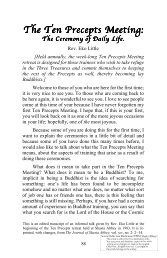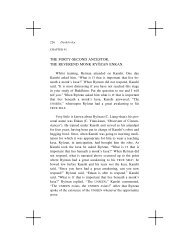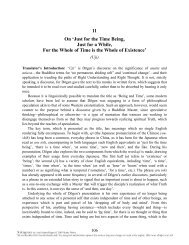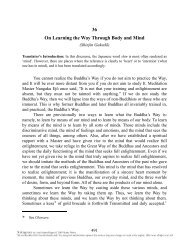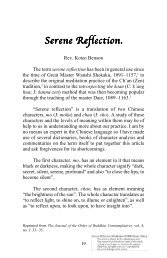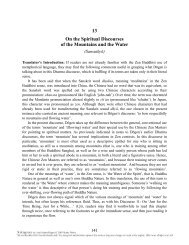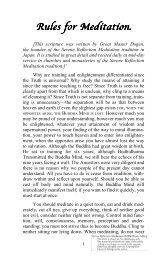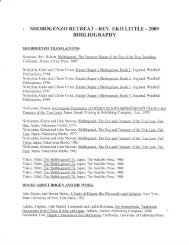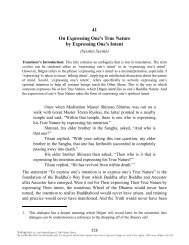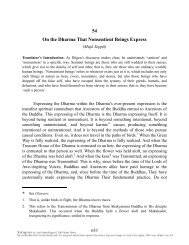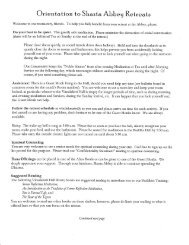- Page 1 and 2:
SŌTŌ ZEN
- Page 3 and 4:
SŌTŌ ZENAn Introduction to the Th
- Page 5 and 6: THIS BOOK IS DEDICATED TO THEBUDDHI
- Page 7 and 8: CONTENTSIntroductionForewordviiixii
- Page 9 and 10: Introductionixthe cause of educatio
- Page 11 and 12: IntroductionxiGreat Master D‡gen
- Page 13 and 14: FOREWORDZen Buddhism, a religion wh
- Page 15: ForewordxvThis is one of the charac
- Page 19 and 20: 1.The Coming World CultureThe word
- Page 21 and 22: The Coming World Culture 5philosoph
- Page 23 and 24: The Coming World Culture 7religious
- Page 25 and 26: The Coming World Culture 9Western c
- Page 27 and 28: 2.The Basic Thought of BuddhismDoes
- Page 29 and 30: The Basic Thought of Buddhism 13ess
- Page 31 and 32: The Basic Thought of Buddhism 15to
- Page 33 and 34: The Basic Thought of Buddhism 17but
- Page 35 and 36: The Basic Thought of Buddhism 19gra
- Page 37 and 38: The Origin and Development of Zen 2
- Page 39 and 40: The Origin and Development of Zen 2
- Page 41 and 42: The Origin and Development of Zen 2
- Page 43 and 44: The Origin and Development of Zen 2
- Page 45 and 46: The Origin and Development of Zen 2
- Page 47 and 48: The Origin and Development of Zen 3
- Page 49 and 50: The Origin and Development of Zen 3
- Page 51 and 52: 4.Zen and Oriental CultureZen origi
- Page 53 and 54: Zen and Oriental Culture 37(1192Ð1
- Page 55: Zen and Oriental Culture 39Ming Dyn
- Page 59 and 60: Zen and Oriental Culture 43The arch
- Page 61 and 62: 5.The Basic Meaning of Sōtō ZenTh
- Page 63 and 64: The Basic Meaning of Sōtō Zen 47d
- Page 65 and 66: The Basic Meaning of Sōtō Zen 49I
- Page 67 and 68: The Basic Meaning of Sōtō Zen 51s
- Page 69 and 70: The Basic Meaning of Sōtō Zen 53y
- Page 71 and 72: The Basic Meaning of Sōtō Zen 55t
- Page 73 and 74: 6.The True Spirit of the Two Ancest
- Page 75 and 76: The True Spirit of the Two Ancestor
- Page 77 and 78: The True Spirit of the Two Ancestor
- Page 79 and 80: The True Spirit of the Two Ancestor
- Page 81 and 82: The True Spirit of the Two Ancestor
- Page 83 and 84: The True Spirit of the Two Ancestor
- Page 85 and 86: The True Spirit of the Two Ancestor
- Page 87 and 88: The True Spirit of the Two Ancestor
- Page 89 and 90: The Key to the Doctrines 73training
- Page 91 and 92: The Key to the Doctrines 75He alway
- Page 93 and 94: The Key to the Doctrines 77to belie
- Page 95 and 96: The Key to the Doctrines 79the True
- Page 97 and 98: The Key to the Doctrines 81or doing
- Page 99 and 100: The Key to the Doctrines 83Buddha i
- Page 101 and 102: Zen Buddhism and the West 85to Zen,
- Page 103 and 104: Zen Buddhism and the West 87States
- Page 105 and 106: Zen Buddhism and the West 89what Ju
- Page 107 and 108:
Zen Buddhism and the West 91Zen ind
- Page 109 and 110:
Zen Buddhism and the West 93The Ess
- Page 111 and 112:
The Religion of the Future 95How do
- Page 113 and 114:
The Religion of the Future 97presen
- Page 115 and 116:
The Religion of the Future 99The re
- Page 117:
The Religion of the Future 101from
- Page 120 and 121:
104 Appendix I: Western Interest in
- Page 122 and 123:
. Zen in the WestZen penetrates int
- Page 124 and 125:
108 Appendix I: Western Interest in
- Page 126 and 127:
110 Appendix I: Western Interest in
- Page 128 and 129:
THE GIST OF SŌTŌ ZENa. What is Se
- Page 130 and 131:
114 Appendix I: The Gist of Sōtō
- Page 132 and 133:
. Development in ZenAlthough the wo
- Page 134 and 135:
118 Appendix I: The Gist of Sōtō
- Page 136 and 137:
120 Appendix I: The Gist of Sōtō
- Page 138 and 139:
122 Appendix I: The Gist of Sōtō
- Page 140 and 141:
124 Appendix I: The Gist of Sōtō
- Page 142 and 143:
d. What is Serene Reflection Medita
- Page 144 and 145:
128 Appendix I: The Gist of Sōtō
- Page 146 and 147:
e. The Religion of Great Masters D
- Page 148 and 149:
132 Appendix I: The Gist of Sōtō
- Page 150 and 151:
134 Appendix I: The Gist of Sōtō
- Page 152 and 153:
f. What is the Role of Sōtō Zen P
- Page 154 and 155:
138 Appendix I: The Gist of Sōtō
- Page 156 and 157:
140 Appendix I: The Gist of Sōtō
- Page 158 and 159:
142 Appendix II: Correspondencesucc
- Page 160 and 161:
144 Appendix II: CorrespondenceThe
- Page 162 and 163:
146 Appendix II: Correspondence
- Page 164 and 165:
148 Appendix II: CorrespondenceThe
- Page 166 and 167:
150 Appendix II: CorrespondenceWoul
- Page 168 and 169:
152 Appendix II: CorrespondenceKim
- Page 170 and 171:
154 Appendix II: CorrespondenceRev.
- Page 172 and 173:
156 Sōtō Zenbecame his personal d
- Page 174 and 175:
158 Sōtō Zenmonastics, the Order
- Page 176:
160 Sōtō Zena small library and c




